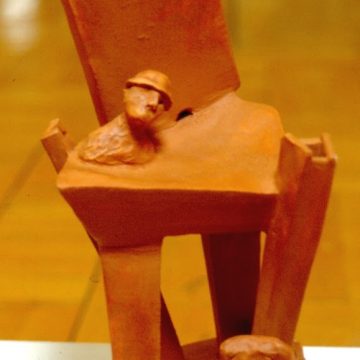Building Home
photo collage
If artists are confident in their work, preparing dossiers should be a rewarding, even if demanding, experience. Done with attention and deliberation, the preparation becomes a valuable self-critical exercise that can reveal new ideas or clarify what must be revealed in documents.
Done properly, that’s the key, usually not only once during an artistic career but at regular intervals, following the requirements for specific submissions, or for each exhibition of new work.
Dossiers are made up of a selection of documents depending on their use and their intended readers. Usually, venues will be very clear about what they require in submissions. Artists who wish to be considered professional must honor those requirements to the letter.
The Letter of Intent or Cover Letter addresses the intended readers directly and
1. Introduces the artist generally
2. Lays out the reasons why the dossier is being presented
3. Lists the accompanying documents
4. Provides contact information
The Artist’s Biography answers these types of questions to introduce the artist and the work within a socio-cultural context
1. Who is the artist as a person?
2. What triggered the interest in the visual arts, what have been the influences since?
3. How did the artist come to the medium or media and go about gaining the necessary skills and knowledge to do the work?
4. What has been the evolution of the process and the thinking?
The Artist’s Statement achieves various goals whether the work is dealt with individually, as a series or as a body of work,
1. It defines the work in physical terms.
2. It identifies the subject matter and style
3. It identifies the main function of symbols and reveals the driving themes of the work
4. It aligns the work aesthetically with others either from history or from the artist’s contemporaries or both
5. It underlines the concepts being developed and the artist’s immediate or long-term goals (depending on the purpose of the dossier)
It must be well-written (no typos or spelling mistakes), must use language you are comfortable with and understand (art speak is counterproductive if you don’t think naturally in those words or terms), it must establish your understanding of your own motivations, themes and processes
The Portfolio, whether actual or virtual, can vary in length depending on the intent of the dossier. An artist’s professional portfolio usually includes 20 high quality images that illustrate the Statement, all numbered and titled. Give examples of:
1. The man medium, technique and subject
2. The principal thematic, approach and style
3. The most recent work (past 5 years) or
If a general portfolio, the best work produced to date; or
If for an exhibition soon: works available immediately or
The type of work being proposed for a later exhibition but not yet created
The Descriptive List of Works provides technical information about the images in the Portfolio. In the same sequence provide:
1. Title
2. Year (optional)
3. If part of a series, sequence
4. Dimensions unframed and framed (if applicable) as follows: Height, width, depth in inches and centimeters
5. Ground and medium or media
6. Price (pre and post venue commission) or value (for insurance purposes)
The Budget is for those dossiers sent to granting agencies or for specific creation projects, and sometimes for residencies and exchanges. It must show a clear control of expenses and a cover-the-bases preparedness. Include such things as
1. Cost of materials
2. Installation and assembly costs
3. Artist’s salary (and of any other participants)
4. Transport and storage costs
5. Displacement costs (travel, accommodation, etc.)
The Curriculum Vitae or CV is the list, usually from the most recent back to about ten years, of the artist’s major professional achievements. The information on it can be verified or proven on demand. Of particular importance: are exhibitions and activities in ‘peer assessment’ (juried or with prizes) situations, and preferably in galleries, art centers or artist-run spaces with curators or selection committees
1. Solo exhibitions
2. Regional and National group exhibitions and/or important local exhibitions
3. International Exhibitions
4. Grants
5. Prizes or mentions
6. Public or corporate collections
7. Art education
8. Professional development activities
9. Service on juries, committees, and other art community-supporting activities
10. Articles or critiques you’ve written in the field and had published
11. Teaching experience
12. Service on boards or committees
The Critical, Press or Media Coverage. Here you include copies of all documents that show there was public or critical response to your work or to your exhibitions.
1. Critical reviews exhibitions in newspapers or professional magazines
2. Published articles about you, your process or community involvement
3. Letters of recommendation or appraisal by someone with authority in the profession
4. Any other public notice EXCEPT events listings or paid ads
The SASE or Self-Addressed-Stamped Envelope is for the return of hard copies, CDs and other actual documentation. Artists who do not include one inadvertently indicate their dossier is not worth recuperating. Artists picking up their dossiers in person are not necessarily welcome, especially if they have been rejected.
Enjoy the process of creating and maintaining your dossier. The time you devote to it could be the best investment you make in yourself and your work once it leaves your studio.







